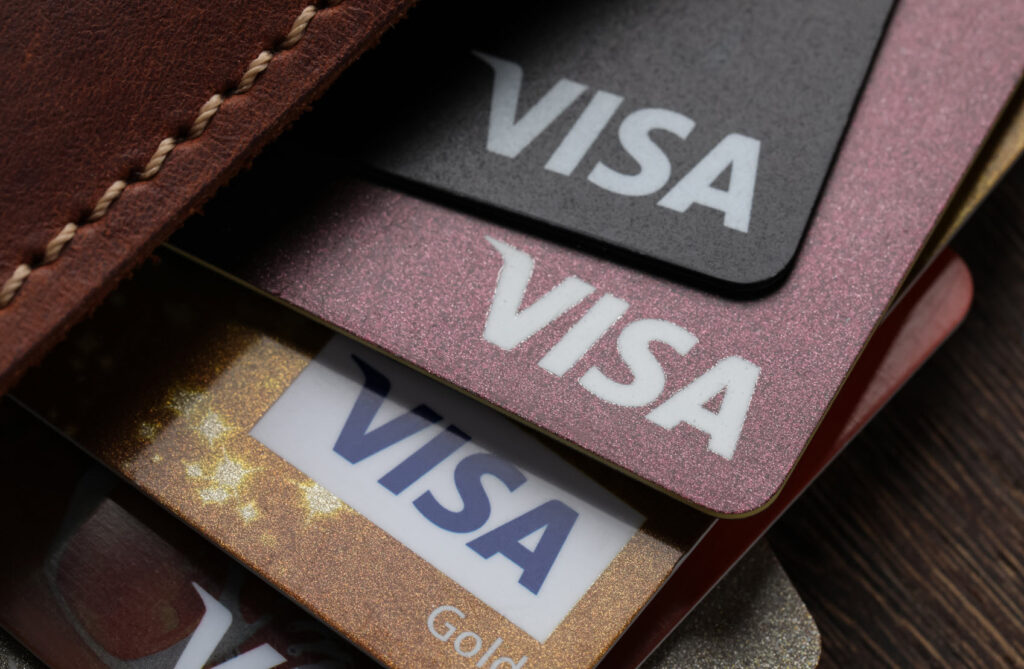The credit card industry is a multi-billion-dollar arena dominated by powerful players like Visa, American Express, and Discover. Dive into the intricacies of how credit cards work, the business models of these industry giants, and the impact of credit scoring on consumers.
Visa’s Dominance: A Market Behemoth
Visa’s establishment as a national credit card by the Bank of America in 1958 paved the way for its unparalleled dominance, garnering over 60% of purchases in the payment card industry. It introduced its first debit card in 1975. It went public as VISA Inc. in 2008, raising 17.9 billion in the largest IPO to date. Today, VISA has approximately 3.4 billion cards in the market across 200 countries and jurisdictions. The company’s colossal revenue comes from transaction fees, raking in around $0.25 for every $100 spent and boasting profit margins of 30–40%, dwarfing the 2-4% profit margins of the retail industry. VISA recorded a purchase volume of $4.17 trillion in the US in 2020, according to a 2021 Nilson report.
Merchants Dislike Credit Cards
Many merchants complain that they have been exploited by credit card companies because they claim they have no choice but to rely on credit card companies for payment. They claim that the lack of competition in the credit card space enables companies like VISA to charge them too much for transactions—fees that either hurt their profitability or costs that have to be added to prices for customers.

Challenges and Revenues: The Visa Conundrum
Visa’s staggering revenue of over $21.8 billion in 2020 is fueled by data processing fees, service revenues, and the much-debated swipe fees. Legal challenges and antitrust litigation have amounted to concerns about Visa’s market power and the impact of hefty swipe fees on merchants.
How Does VISA Make Money?
VISA doesn’t make any money from the interest fees charged to customers; rather, those fees are charged by the card issuer, which is usually a bank. This enables VISA to face none of the risks, like default risk, that come with lending money. VISA does not have any relationship with individual consumers, that relationship is with the bank that issues the card. So when you get a VISA card that comes from the Royal Bank, for example, this is the Royal Bank’s card, not VISA’s card, VISA is the network that supports transactions behind the card.
39% of VISA’s revenue comes from processing fees, 34% comes from service revenues, which are charges VISA makes on the banks for working with VISA payment methods, 22% is for international transaction revenues, and the remaining 5% is for other payment methods, which are a growing part of their business.
The Four-Party Model.
VISA relies on what is known as the Four-Party Model. When you buy something with a VISA card, there are 4 entities that make the card work. First, you, the customer, make a purchase. The second is the bank holding your money. Third is the store selling you a product. Fourth is VISA which connects all of those parties to facilitate the transaction. VISA is essentially a physical network, not unlike a telephone network, that connects about 18,000 financial institutions.
Also Read:
- How Do Credit Scores Work
- How Do Credit Cards Work
- Credit Card Rewards. Who Pays?
- Credit Score and Your Mortgage
- Hard vs Soft Credit Pull
The Amex Experience: Tailored Rewards and Market Strategy
American Express, with its affluent customer base, utilizes a spend-centric model and closed-loop system to offer custom rewards and specialized offers. Furthermore, the company targets millennials and underbanked Americans to diversify its customer base, and has made strategic investments in targeting Gen Z and millennials through unique experiences like exclusive concerts.
Credit Scores: The Consumer Credit Ecosystem
Canada runs on credit. A person’s three-digit credit score represents how likely they are to pay their bills. Your credit score impacts almost every aspect of your financial life. Essentially, it is your financial life passport that enables you to do almost everything you need to do as an adult, from accessing credit to getting a credit card to getting a mortgage to getting a reasonable car loan to even getting a place to rent. Today, most landlords do a credit check on prospective tenants. Even some employers and insurance companies use your credit score for a variety of reasons. 42% of people have been denied a financial product in the past due to an insufficient credit score. Life becomes more expensive and difficult as your credit score falls.
The credit scoring system today is flawed. Others disagree and say our system is the best in the world and that criticism mostly comes from a lack of understanding around how credit scores are calculated and how they are applied. They argue that a world without credit scores would be much more expensive and fraud would be out of control.
Conclusion
The credit card industry is a dynamic landscape shaped by the strategies and challenges of key players like Visa, American Express, and Discover. From the complexities of swipe fees to the significance of credit scores, understanding the inner workings of the credit card industry is critical for consumers and businesses alike.












